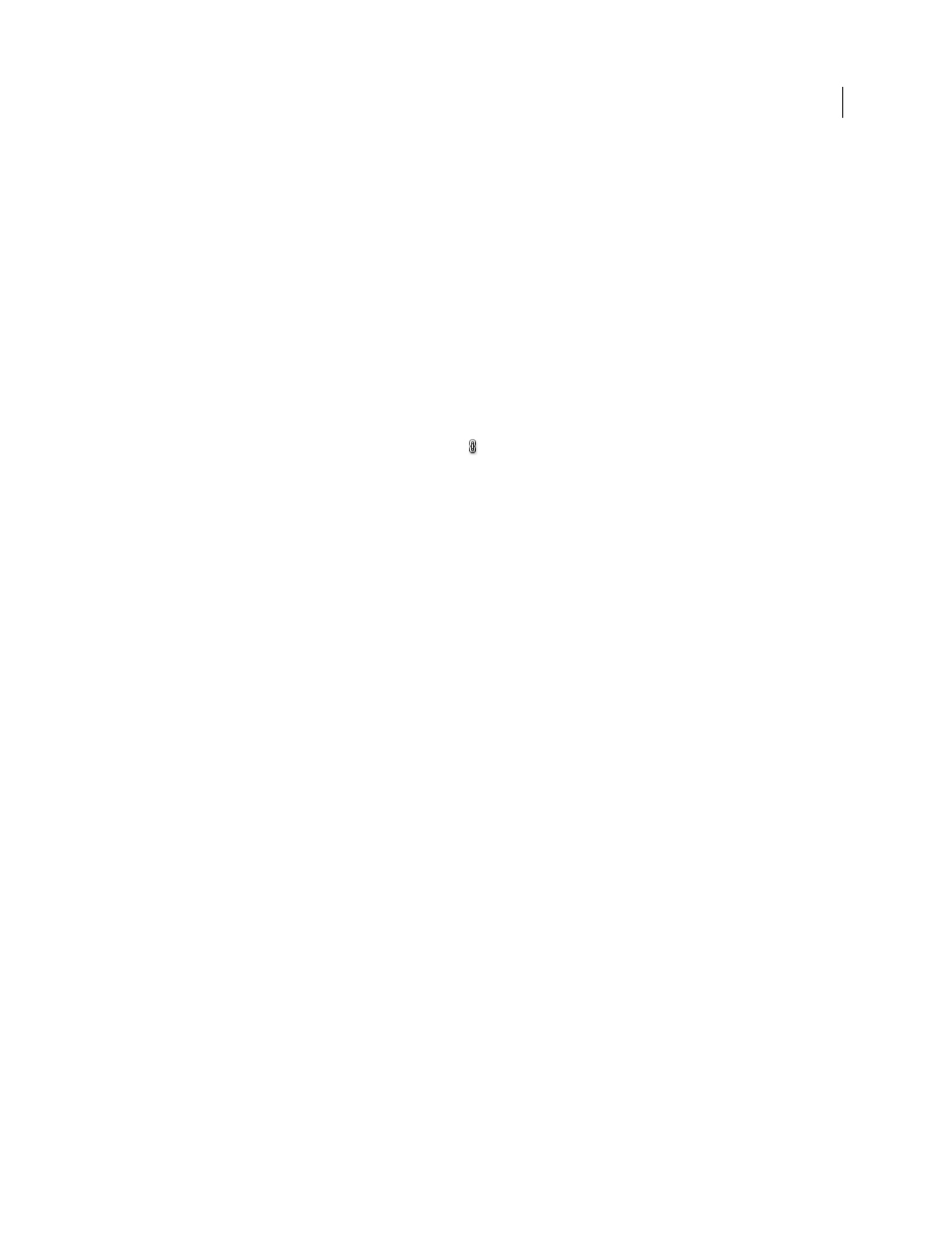Scale a document for printing, Change the printer resolution and screen frequency – Adobe Illustrator CS4 User Manual
Page 415

408
USING ADOBE ILLUSTRATOR CS4
Printing
Scale a document for printing
To fit an oversized document on a piece of paper smaller than the artwork’s actual dimensions, you can use the Print
dialog box to scale the document’s width and height, either symmetrically or asymmetrically. Asymmetric scaling is
useful when, for example, you’re printing film for use on a flexographic press: if you know in which direction the plate
will be mounted on the press drum, scaling can compensate for the 2% to 3% stretching of the plate that usually occurs.
Scaling does not affect the size of the pages in the document, it just changes the scale at which the document prints.
1
Choose File
> Print.
2
Do one of the following:
•
To prevent scaling, select Do Not Scale.
•
To scale the document automatically to fit to the page, select Fit To Page. The scaling percentage is determined by
the imageable area defined by the selected PPD.
•
To activate the Width and Height text
boxes, select Custom. Enter percentages from 1 to 1000 for the width or
height. Deselect the Constrain Proportions button
to change the document width-to-height ratio.
Change the printer resolution and screen frequency
Adobe Illustrator prints fastest and best by using the default printer resolution and screen frequency. However, in
some cases, you might want to change the printer resolution and screen frequency—for example, if you draw a very
long curved path that won’t print due to a limit-check error, if printing is slow, or if gradients and meshes show
banding when printed.
1
Choose File
> Print.
2
For Printer, select a PostScript printer, Adobe PostScript® File, or Adobe PDF.
3
Select Output on the left side of the Print dialog box.
4
For Printer Resolution, select a screen frequency (lpi) and printer resolution (dpi) combination.
Printer resolution is measured in the number of ink dots produced per inch (dpi). Most desktop laser printers have a
resolution of 600 dpi, and imagesetters have a resolution of 1200 dpi or higher. Inkjet printers produce a microscopic
spray of ink, not actual dots; however, most inkjet printers have an approximate resolution of 300 to 720 dpi.
When printing to a desktop laser printer, but especially to imagesetters, you must also consider screen frequency.
Screen frequency is the number of halftone cells per inch used to print grayscale images or color separations. Also
known as screen ruling or line screen, screen frequency is measured in lines per inch (lpi)—or lines of cells per inch in
a halftone screen.
A high line-screen ruling (for example, 150 lpi) spaces the dots used to create an image close together to create a finely
rendered image on the press; a low screen ruling (60 lpi to 85 lpi) spaces the dots farther apart to create a coarser image.
The size of the dots is also determined by the line screen. A high line-screen ruling uses small dots; a low screen ruling
uses large dots. The most important factor in choosing a line-screen ruling is the type of printing press your job uses.
Ask your print shop how fine a line screen its press can hold, and make your choices accordingly.
The PPD files for high-resolution imagesetters offer a wide range of possible line-screen rulings paired with various
imagesetter resolutions. The PPD files for lower-resolution printers typically have only a few choices for line screens,
and they are coarser screens of between 53 lpi and
85 lpi. The coarser screens, however, give optimum results on lower-
resolution printers. Using a finer screen of 100 lpi, for example, actually decreases the quality of your image when a
low-resolution printer is used for final output. That’s because increasing the lpi for a given resolution decreases the
number of colors that can be reproduced.